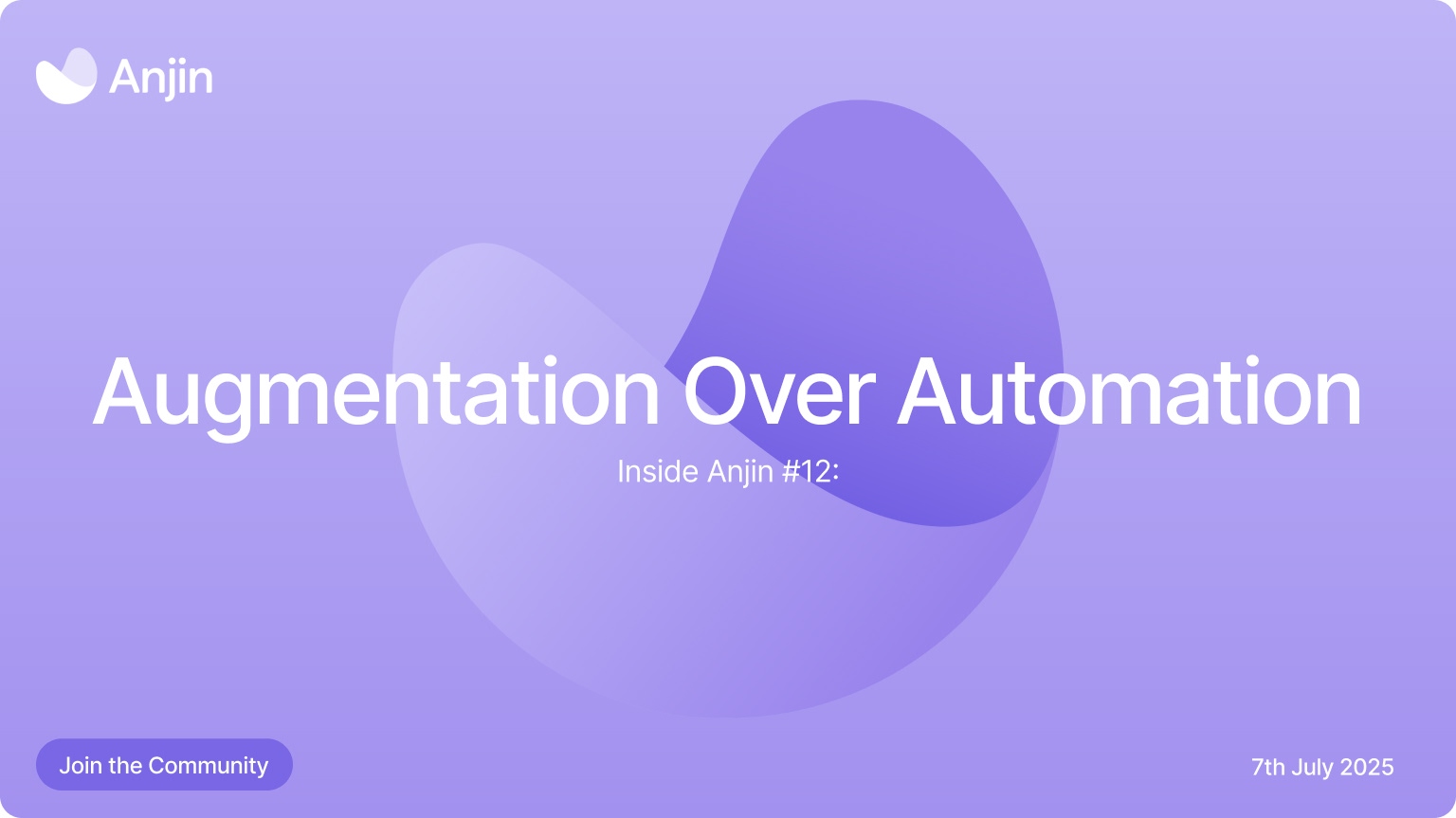If the goal is to remove the human entirely, you're probably solving the wrong problem.
There’s no shortage of AI platforms promising to automate everything. Sales, research, support, strategy - you name it, there’s a model claiming it can replace a person.
We’ve seen it. We’ve tested it.
And in most cases, it doesn’t work. Not reliably. Not meaningfully.
What does work?
AI that helps people move faster, see more clearly, and make better decisions.
Not take the wheel away - just reduce the drag.
That’s the space we care about.
Why We Don’t Build for Full Automation
There are places where full automation makes sense. Data ingestion. Log parsing. Scheduling.
But when it comes to the kind of work Anjin supports - language generation, market insight, decision support - we’ve found that trying to remove the human almost always removes the value.
Because context matters. Intuition matters.
And most of the time, the last 10% of judgment is the work.
We don’t want agents making decisions on your behalf.
We want agents giving you the best possible position to make them yourself.
What Augmentation Looks Like in Practice
An augmented workflow is one where the agent:
- Handles the heavy lifting (like parsing 10 competitor pages for SEO structure)
- Synthesises raw information into usable insight
- Suggests options, not mandates outcomes
- Fades into the background once you take over
That’s different from handing you a “final result” with no visibility into how it was made.
We’d rather give you a draft with context than a finished piece you don’t trust.
Why This Builds More Trust
We’ve learnt that users trust agents more when:
- They understand what the agent is doing
- They can review, adjust, and approve output
- The agent doesn’t pretend to be smarter than it is
- The handoff between machine and human feels respectful
It’s not about dumbing the tool down.
It’s about making sure it stays in its lane - and does it well.
When agents overstep, users disengage.
When agents assist, users come back.
A Few Design Principles We Follow
Here’s how we design Anjin agents with augmentation in mind:
- Default to transparency: Show how the result was formed
- Never auto-publish: Everything gets human review
- Encourage edits: Make outputs easy to improve
- Focus on “first drafts”: Get users 80% of the way there
- Support decision-making: Don’t try to simulate it
We don’t hide our agents’ process.
We show it - so you stay in control.
Final Thought: Strong Tools Still Have Handles
We’re not trying to build magic.
We’re building machines with handles. Systems that work with you - not instead of you.
Because the most effective AI doesn’t remove the human.
It amplifies them.
That’s augmentation.
And it’s how we build every agent at Anjin.
Want to build agents that make users better - not just faster?
Join the community or catch up on the rest of the series:
- Inside Anjin #11: From Hype to Habit
- Inside Anjin #10: Agents We Haven’t Built (Yet)
- Inside Anjin #09: Designing for Permission, Not Just Access





